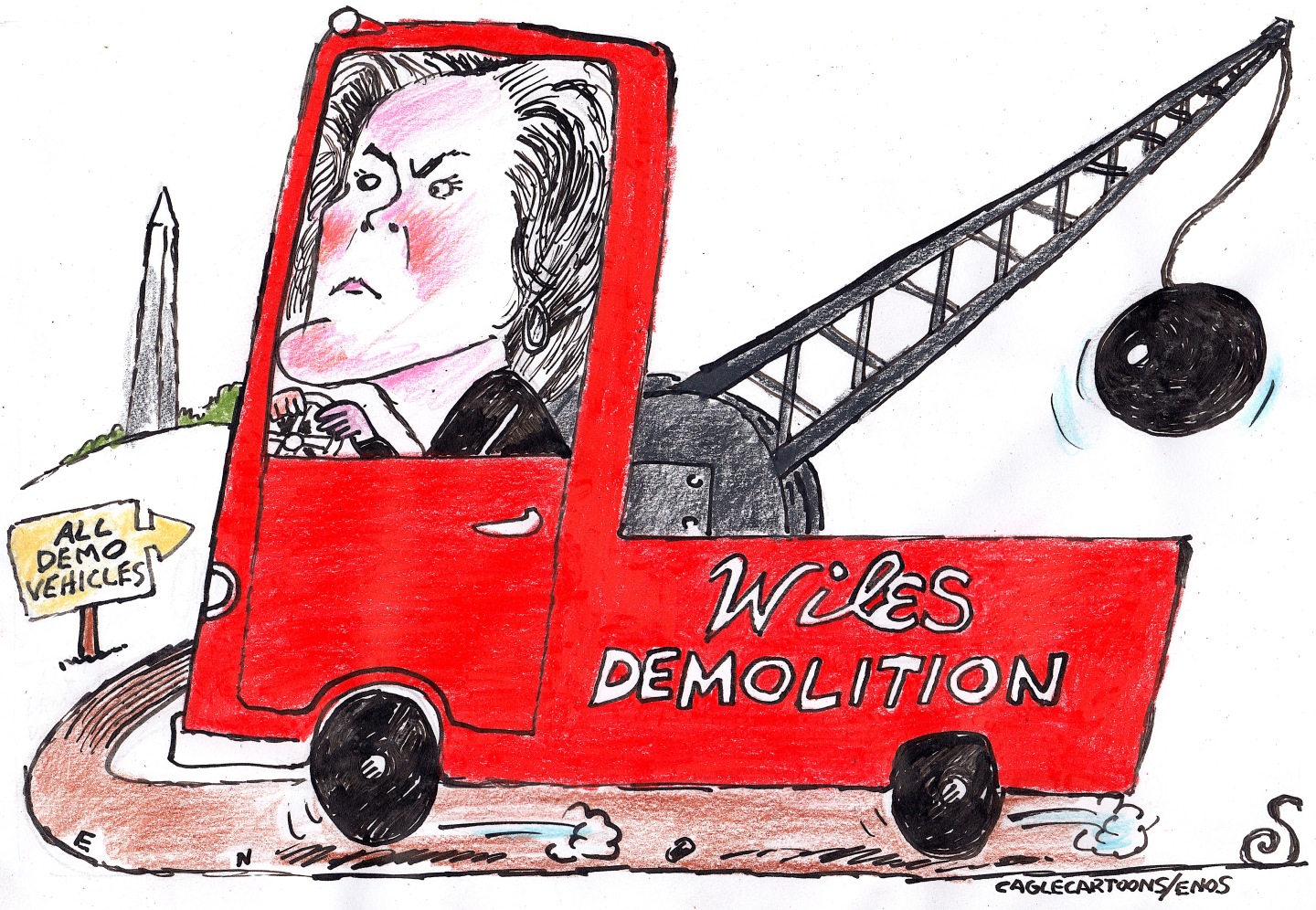Doctors sound the alarm about insurance company ‘downcoding’
‘It’s blatantly disrespectful,’ one doctor said


With the red tape of health insurance already causing frustration for millions of Americans, doctors are helping to shed light on a common industry practice: downcoding. Insurance companies change claims to save money, and according to experts, it’s yet another way that health insurance plays into a rigged system.
What is downcoding?
When downcoding, insurance companies “automatically downgrade the claims a doctor sends them to a lower tier of reimbursement, without actually reviewing details about the visit itself,” said NBC News. For Dr. Terry Wagner, a family medicine doctor in Hudson, Ohio, this “means a ‘level four’ office visit that might yield $170 is being paid as if it’s a ‘level three’ for about $125.” This $45 difference may not seem like a lot, but “when it’s happening on dozens of claims, and to a physician-owned practice like Wagner’s, the damage mounts.”
“It’s blatantly disrespectful,” Wagner said to NBC. A “computer program is deciding what my level of care is. If they question my level of care, then ask for my notes. Look at the tests I ordered. Look at my charts.” Doctors who want to challenge a downcoding decision typically have to “appeal each claim with documentation.” And these doctors may have nowhere to turn, as most big health insurance players practice downcoding. Aetna and Cigna have both admitted to downcoding, and “other insurers including Anthem Blue Cross Blue Shield, Humana and Molina Healthcare have all acknowledged downcoding higher-level claims for certain office visits,” said NBC.
The Week
Escape your echo chamber. Get the facts behind the news, plus analysis from multiple perspectives.

Sign up for The Week's Free Newsletters
From our morning news briefing to a weekly Good News Newsletter, get the best of The Week delivered directly to your inbox.
From our morning news briefing to a weekly Good News Newsletter, get the best of The Week delivered directly to your inbox.
Why is it a problem in the health care industry?
Insurance companies have defended the practice. Cigna says the “goal is to fight upcoding and billing abuse, arguing that some physicians bill for more complex visits than were actually provided, such as charging for a 40-minute encounter when the visit lasted only 10 minutes,” said health care website Stat News. Companies have also argued that these patterns “drive unnecessary costs for patients and employers.”
But the codes that insurers use are “not based on time alone,” said Stat News. Under the current rules, physicians can bill “according to either total time or the complexity of medical decision making.” This means that a doctor who “legitimately spends half an hour or more untangling multiple conditions, reviewing medications and coordinating care could still be flagged as an outlier, triggering payment reductions.”
Doctors in smaller clinics are worried this could lead to higher operating costs. The “understanding of everyone who has been rallying the cry about this” is that the new policy “just says they are going to downcode everybody and it’s up to us to go back and fight and prove we are not doing it inappropriately,” Dr. Peter Hahn, a cardiologist in Uncasville, Connecticut, told The Connecticut Mirror of Cigna’s downcoding plan.
This could result in doctors having to “make choices that are inherently bad for patients, like cramming more patient visits into a single day to make up for lost revenue, dropping patients on certain insurance plans, or selling their practices altogether,” said NBC. There’s a “break point and it’s like you either see more” patients and “give them less time, or you just give up,” Wagner said. “It’s exhausting.”
A free daily email with the biggest news stories of the day – and the best features from TheWeek.com
Justin Klawans has worked as a staff writer at The Week since 2022. He began his career covering local news before joining Newsweek as a breaking news reporter, where he wrote about politics, national and global affairs, business, crime, sports, film, television and other news. Justin has also freelanced for outlets including Collider and United Press International.
-
 Political cartoons for December 20
Political cartoons for December 20Cartoons Saturday’s political cartoons include drowning rats, the ACA, and more
-
 5 fairly vain cartoons about Vanity Fair’s interviews with Susie Wiles
5 fairly vain cartoons about Vanity Fair’s interviews with Susie WilesCartoon Artists take on demolition derby, alcoholic personality, and more
-
 Joanna Trollope: novelist who had a No. 1 bestseller with The Rector’s Wife
Joanna Trollope: novelist who had a No. 1 bestseller with The Rector’s WifeIn the Spotlight Trollope found fame with intelligent novels about the dramas and dilemmas of modern women
-
 Health: Will Kennedy dismantle U.S. immunization policy?
Health: Will Kennedy dismantle U.S. immunization policy?Feature ‘America’s vaccine playbook is being rewritten by people who don’t believe in them’
-
 Stopping GLP-1s raises complicated questions for pregnancy
Stopping GLP-1s raises complicated questions for pregnancyThe Explainer Stopping the medication could be risky during pregnancy, but there is more to the story to be uncovered
-
 Choline: the ‘under-appreciated’ nutrient
Choline: the ‘under-appreciated’ nutrientThe Explainer Studies link choline levels to accelerated ageing, anxiety, memory function and more
-
 RFK Jr. sets his sights on linking antidepressants to mass violence
RFK Jr. sets his sights on linking antidepressants to mass violenceThe Explainer The health secretary’s crusade to Make America Healthy Again has vital mental health medications on the agenda
-
 How music can help recovery from surgery
How music can help recovery from surgeryUnder The Radar A ‘few gentle notes’ can make a difference to the body during medical procedures
-
 Nursing is no longer considered a professional degree by the Department of Education
Nursing is no longer considered a professional degree by the Department of EducationThe Explainer An already strained industry is hit with another blow
-
 Vaccine critic quietly named CDC’s No. 2 official
Vaccine critic quietly named CDC’s No. 2 officialSpeed Read Dr. Ralph Abraham joins another prominent vaccine critic, HHS Secretary Robert F. Kennedy Jr.
-
 Nitazene is quietly increasing opioid deaths
Nitazene is quietly increasing opioid deathsThe explainer The drug is usually consumed accidentally
